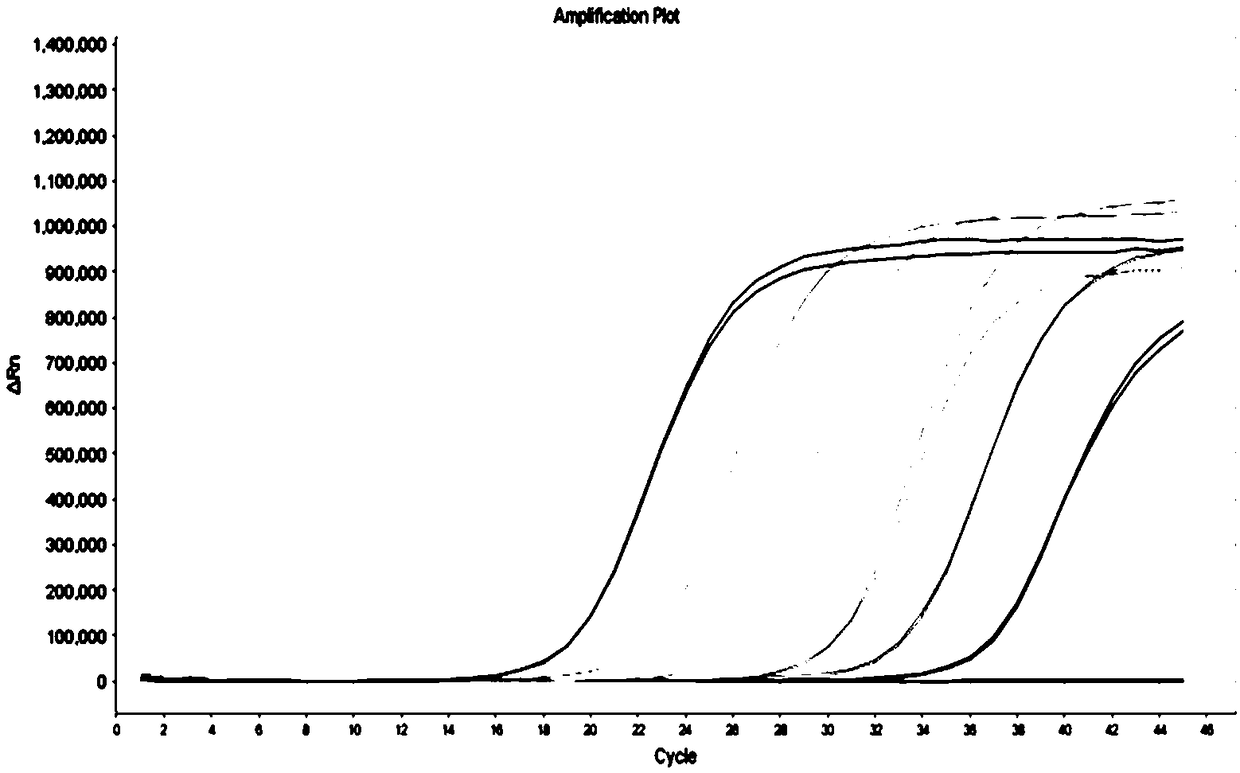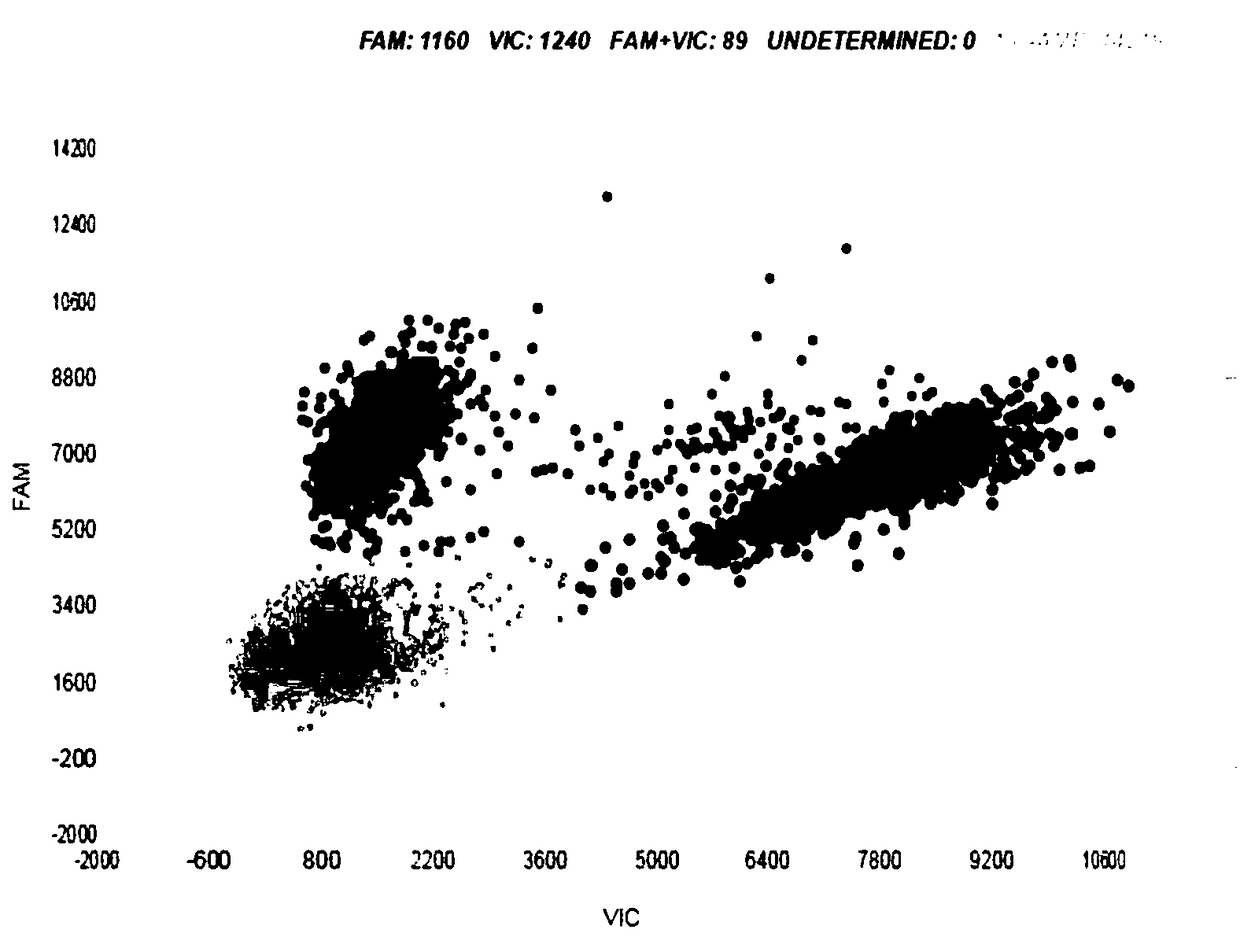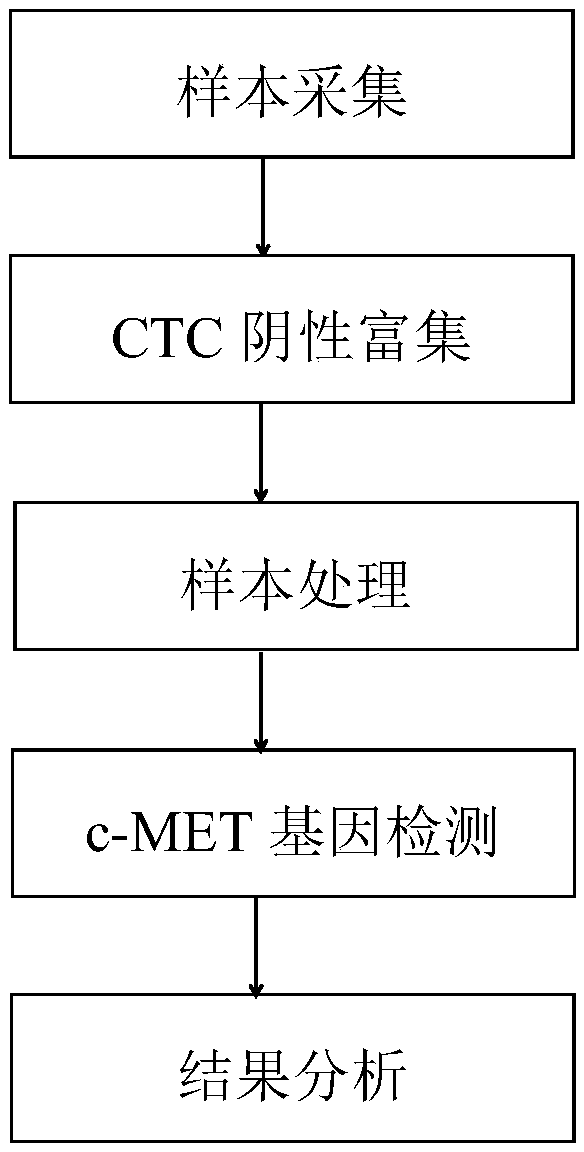Method for detecting copy number variation of c-MET gene from human peripheral blood CTC and kit
A technology of gene copy number and human peripheral blood, applied in the field of detection of c-MET gene copy number variation, can solve problems such as low CTC content, and achieve the effects of simple operation, time saving and high throughput
- Summary
- Abstract
- Description
- Claims
- Application Information
AI Technical Summary
Problems solved by technology
Method used
Image
Examples
Embodiment 1
[0030] Example 1: Enrichment of CTCs from human peripheral blood by subtraction method
[0031] Instruments: balances, centrifuges, pipettes, oscillating mixers.
[0032] Reagents: 10×CRC cleaning solution (Taizhou Scitech), Cytelligen cell separation solution (Taizhou Scitech), immunomagnetic bead binding buffer (from IP kit, Shanghai Changzhe Biology).
[0033] step:
[0034] (1) Collect peripheral blood from the patient: In order to avoid epithelial cell contamination, after discarding the first 2mL of blood, use the provided blood collection tube to collect 6.0mL of blood, and immediately invert the blood collection tube 5-10 times.
[0035] (2) Balance the blood collection tube with a balance, mix it upside down and then centrifuge at room temperature at 2000rpm for 20min. Discard the supernatant to the point 5mm above the brownish-red precipitate, add 10×CRC cleaning solution until the yellow line on the label of the blood collection tube is full, cover the yellow tube...
Embodiment 2
[0041] Example 2: Establishment of c-MET gene copy number variation detection method
[0042] In this example, the detection system of c-MET gene and internal reference gene was optimized and confirmed.
[0043] Primers and probes: purchased from Shanghai Sangong.
[0044] The base sequence of the taqman probe corresponding to the c-MET gene is shown in SEQ ID NO: 1:
[0045] attagcctctgtctcggtgg caggttcc;
[0046] The specific upstream and downstream primers for detecting c-MET gene subtypes from human peripheral blood CTCs, the base sequences of which are shown in SEQ ID NO: 2 and SEQ ID NO: 3:
[0047] Upstream primer: tcattggttc caatcacagc t;
[0048] Downstream primer: gccaccgaga cagaggctaa t.
[0049] The base sequence of the taqman probe corresponding to the internal reference gene is shown in SEQ ID NO: 4:
[0050] agcctcccct cctcatgcct tcttgcct;
[0051] The specific upstream and downstream primers of the subtype of the internal reference gene, the base sequence...
Embodiment 3
[0064] Example 3: Detection of c-MET gene copy number variation in CTC cells
[0065] The composition of the 3D PCR detection c-MET gene copy number variation detection kit.
[0066] The c-MET gene copy number variation detection kit of this example includes 1×3D Digital PCR MasterMixv2, 0.1 μmol / L of upstream and downstream primers, and 0.2 μmol / L of probes. The components of the kit are shown in Table 4.
[0067] Primers and probes: purchased from Shanghai Sangong.
[0068] The base sequence of the taqman probe corresponding to the c-MET gene is shown in SEQ ID NO:1.
[0069] Specific upstream and downstream primers for detecting c-MET gene subtypes from human peripheral blood CTCs, the base sequences of which are shown in SEQ ID NO: 2 and SEQ ID NO: 3.
[0070] The base sequence of the taqman probe corresponding to the internal reference gene is shown in SEQ ID NO:4.
[0071] The base sequences of the specific upstream and downstream primers for the subtype of the inter...
PUM
 Login to View More
Login to View More Abstract
Description
Claims
Application Information
 Login to View More
Login to View More - R&D Engineer
- R&D Manager
- IP Professional
- Industry Leading Data Capabilities
- Powerful AI technology
- Patent DNA Extraction
Browse by: Latest US Patents, China's latest patents, Technical Efficacy Thesaurus, Application Domain, Technology Topic, Popular Technical Reports.
© 2024 PatSnap. All rights reserved.Legal|Privacy policy|Modern Slavery Act Transparency Statement|Sitemap|About US| Contact US: help@patsnap.com










